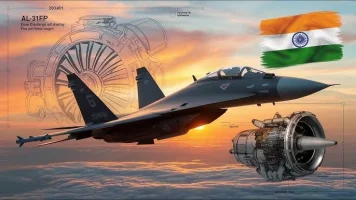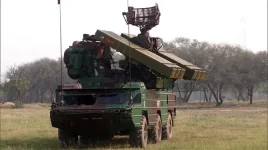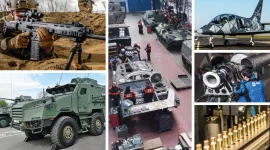- Views: 674
- Replies: 1

The skies above the Himalayas have become a critical arena in the strategic competition between India and China.
While both the Indian Air Force (IAF) and China’s People’s Liberation Army Air Force (PLAAF) possess formidable capabilities, key differences in operational strengths and weaknesses give India a distinct edge in the challenging high-altitude environment along the Line of Actual Control (LAC).
China's PLAAF has made significant strides in modernization, boasting a vast fleet of advanced aircraft like the J-20 stealth fighter, Su-35 strike fighters, and H-6 bombers, many of which are domestically produced. This self-reliance allows for rapid modernization and reduces dependence on foreign suppliers.
Furthermore, the PLAAF utilizes force multipliers like aerial refuelling tankers and AWACS, enabling power projection far beyond its borders. Its arsenal also includes a range of precision-guided munitions and cruise missiles, enhancing its long-range strike capabilities.
However, the PLAAF's technological prowess is hampered by logistical challenges. Deploying and operating high-performance aircraft in the high-altitude Tibetan plateau is difficult. The reduced air density limits payload and flight endurance, hindering the effectiveness of aircraft like the J-20.
In contrast, the IAF capitalizes on its geographic and strategic advantages. Its network of air bases close to the LAC allows for rapid mobilization and close air support to ground forces. This proximity also facilitates the interdiction of PLA supply lines and enables counter-air operations, challenging PLAAF attempts to establish air superiority.
The IAF's fighter fleet, comprising Mirage 2000s, Sukhoi Su-30MKIs, and Rafales, is particularly well-suited for the mountainous terrain. These aircraft excel in low-altitude operations and terrain-hugging strikes, proving highly effective in the rugged environment of Ladakh and Arunachal Pradesh.
While smaller in size than the PLAAF, the IAF compensates with superior training and combat experience. IAF pilots are battle-hardened, having participated in conflicts like the Kargil War and the Balakot airstrikes.
Regular participation in multinational exercises like Red Flag with the USAF and Garuda with the French Air Force ensures familiarity with diverse combat scenarios and fosters interoperability with allied forces.
The PLAAF, traditionally reliant on scripted exercises, has initiated reforms to modernize its training, incorporating unscripted combat scenarios and joint operations. However, inconsistencies in tactical practices across units remain a challenge.
The IAF, with its long tradition of rigorous training and real-world combat experience, maintains a significant advantage in this domain.
Though the J-20 poses a threat with its stealth capabilities, its operational effectiveness in the high-altitude environment is limited. Payload constraints and the logistical challenges of operating from distant bases in Tibet restrict its combat radius and loiter time.
Both air forces have invested heavily in air defence systems. China relies on an integrated network of S-300 and S-400 systems, providing extensive coverage.
However, India's mountainous terrain provides a natural barrier, hindering the effectiveness of these systems against IAF aircraft operating close to the LAC. The IAF's proficiency in low-level strikes further enhances its ability to evade Chinese air defenses.
In conclusion, while the PLAAF boasts technological advancements and a larger fleet, the IAF's geographic advantages, superior training, and combat experience provide India with a significant edge in the high-stakes aerial contest over the Himalayas.





